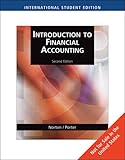Introduction to Financial Accounting Norton, Curtis L.
Material type: TextPublisher: Mason, OH : South-Western, Cengage Learning, 2009Edition: Second edition, International student editionDescription: xxvii, 718, [79] pages : color illustrations ; 28 cmContent type:
TextPublisher: Mason, OH : South-Western, Cengage Learning, 2009Edition: Second edition, International student editionDescription: xxvii, 718, [79] pages : color illustrations ; 28 cmContent type: - text
- unmediated
- volume
- 9780324658743
- 657 NO.I 2009 G.C 23
| Item type | Current library | Collection | Call number | Status | Date due | Barcode | |
|---|---|---|---|---|---|---|---|
|
|
The Knowledge Hub Library | Gift collections | 657 NO.I 2009 G.C (Browse shelf(Opens below)) | Available | 191667 |
Includes Index.
Chapter 1. Accounting as a Form of Communication. -- Chapter 2. Financial Statements and the Annual Report. -- Chapter 3. Processing Accounting Information. -- Chapter 4. Income Measurement and Accrual Accounting. -- Chapter 5. Inventories and Cost of Goods Sold. -- Chapter 6. Cash and Internal Control. -- Chapter 7. Investments and Receivables. -- Chapter 8. Operating Assets: Property, Plant, and Equipment; Natural Resources, and Intangibles. -- Chapter 9. Current Liabilities, Contingencies, and the Time Value of Money. -- Chapter 10. Long-Term Liabilities. -- Chapter 11. Stockholders' Equity. -- Chapter 12. The Statement of Cash Flows. -- Chapter 13. Financial Statement Analysis.
This book is about financial accounting. Accounting is an important form of communication and that financial statements are the medium that accountants use to communicate with those who have some interest in the financial affairs of a company. This book explores how accounting can help everyone make informed decision.
There are no comments on this title.

